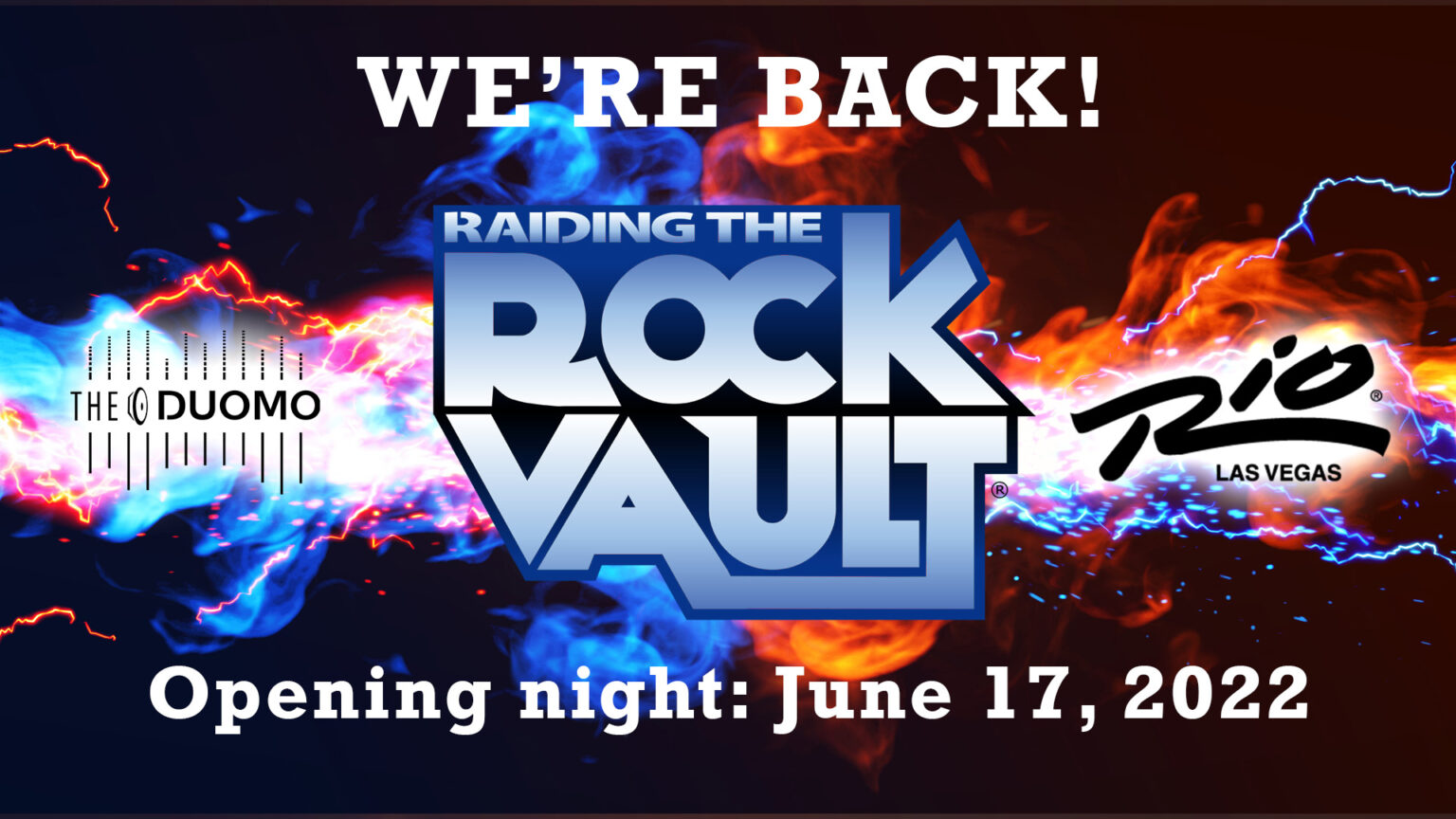Visit Death Valley National Park – A Land of Extremes
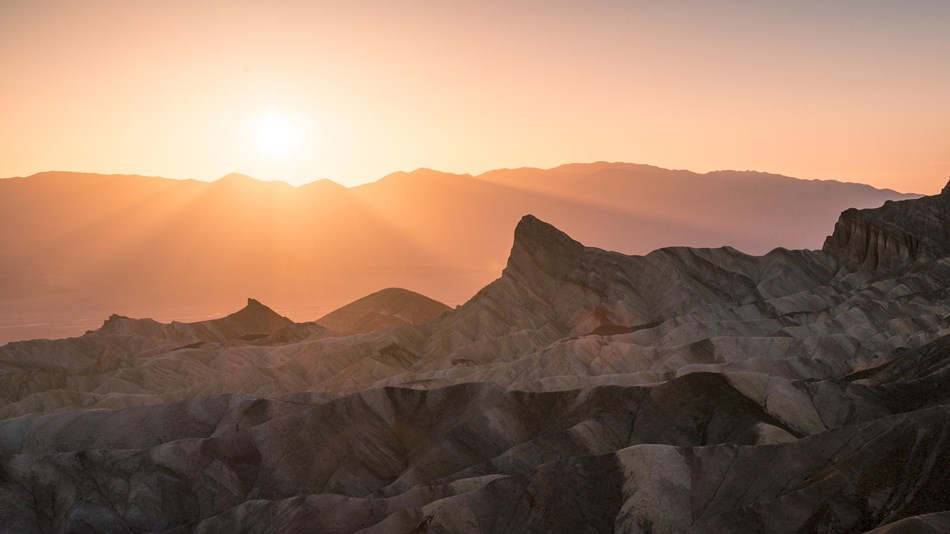
Visit Death Valley National Park (about 2 ½ hours from Las Vegas), a land of extremes.
Death Valley is North America’s hottest, driest, and lowest (282 feet below sea level) National Park in the United States.
Record temperatures reach 134°F, and the annual rainfall is less than two inches.
Although the park is open year-round, you will avoid the higher temperatures by visiting the park during the cooler months – October through April.
Visit Death Valley - Easy Day Trip from Las Vegas
Death valley is about a two hour drive from the Strip (approximately 130 miles).
From Las Vegas: Enter on CA-190 westbound from Death Valley Junction.
Begin at Dante's View, 20 Mule Team, Zabriskie Point, Devil's Golf Course, Badwater Basin, Artist's Drive, Furnace Creek Visitor Center, Harmony Borax Works, and then Mesquite Flat Sand Dunes.
Stop by the visitor center in Furnace Creek to learn about the park. See the 20 minute long film (8:30 am to 4:00 pm daily), explore the museum exhibits, and ask about seasonal ranger programs. ADA Accessible.
Visit Death Valley National Park - Getting Around
California Highway 190, the Badwater Road, the Scotty's Castle Road, and paved roads to Dante's View and Wildrose provide access to the major scenic viewpoints and historic points of interest.
More than 785 miles of paved, unpaved and 4-wheel drive roads provide access to wilderness hiking, camping, and historical sites. All vehicles must be licensed and "street legal".
There are a few hiking trails of varying lengths and difficulties, but most back country areas are accessible only by 4-wheel drive vehicle and cross-country hiking.
Death Valley features many unique points of interest. There are four main areas to explore.
Visit Death Valley National Park - Points of Interest
Furnace Creek: What to See
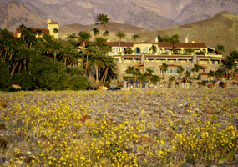
Badwater Basin - the lowest point in North America is covered by almost 200 square miles of salt flats.
Harmony Borax Works - the Harmony Borax operation used twenty mule teams to move borax from Death Valley to nearby communities.
Dante’s View – a mountain top overlook 5000 feet above the Death Valley floor.
Devil’s Golf Course – a large area of rock salt formations that have been eroded by wind and rain into jagged spires.
Artist’s Drive - a beautiful loop drive through colorful volcanic and sedimentary hills.
Twenty Mule Team Canyon - a 2.7 mile unpaved loop drive that winds through the badlands.
Panamint Springs: What to See
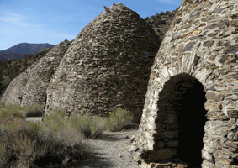
Aguereberry Point – a viewpoint that overlooks Death Valley from the west. Pete Aguereberry’s camp and Eureka Mine are along the gravel road.
Wildrose Charcoal Kilns – beehive-shaped structures built in 1876 to provide fuel to process silver/lead ore.
Father Crowley Vista – viewpoint featuring amazing panoramic views of the Panamint Valley, Rainbow Canyon, the Panamint Range.
Stovepipe Wells: What to See
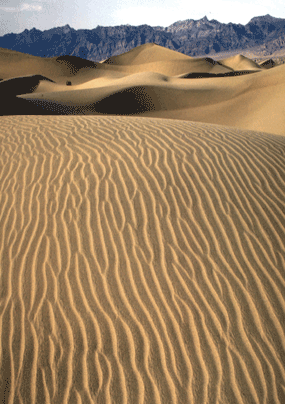
Mesquite Flat Sand Dunes – these sand dunes rise nearly 100 feet from Mesquite Flat, and are the easiest to visit, afternoon is the best time to view the ripples and patterns.
Salt Creek – this stream is home to the rare pupfish, Cyprinodon salinus.
The best time to view the fish is in the Springtime.
Titus Canyon – the largest canyon within the park, here you will find a ghost town, Indian petroglyphs, volcanic deposits, and bighorn sheep.
Scotty’s Castle: What to See
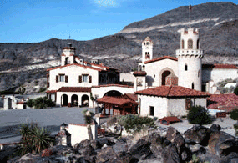
Scotty’s Castle – Scotty's Castle area is closed until further notice following a significant flood, and later fire. Access to the Castle and Grapevine Canyon areas is prohibited, unless part of a ticketed tour.
Eureka Dunes – reaching almost 700 feet, these are the highest dunes in California.
Ubehebe Crater – created by a massive volcanic explosion caused by magma mixing with an underground spring. This 600 foot crater is visible from a paved road or can be viewed from the outer rim.
The Racetrack – dry lakebed known for its mysteriously moving rocks. It is theorized that a rare combination of rain and wind conditions allow the rocks to move.
Visit Death Valley National Park - Activities
Death Valley is a vast national park with over three million acres of designated Wilderness and hundreds of miles of back country roads.
The park contains an amazing variety of terrain, historic sites, plants and animals for outdoor adventurers to explore.
Visit Death Valley - Hiking
There are few constructed trails here; however, most hiking routes in the park are cross-country, up canyons, or along ridges.
Hiking Seasons
The best time to hike in Death Valley is from November through March.
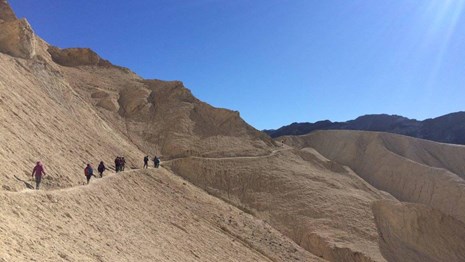
Summer temperatures can be dangerous in the park's lower elevations.
Even during spring and autumn the heat can be unbearable for most people.
Save the low elevation hikes for the cooler winter days.
The high peaks are a pleasant escape from the heat in summer, but are usually covered with snow in the winter and spring.
If you decide to climb them during the winter season, be sure to be properly equipped with adequate winter clothing, an ice axe and crampons.
Water
Due to the dry climate of Death Valley, you must drink more water here than in other places, even in the cooler winter months.
Always carry adequate water (at least 2 liters for a short winter day hike, 1 gallon or more for longer warm season hikes and overnighters).
Springs are rare and should not be considered reliable. Boil or treat water from these sources before using.
Hikes By Difficulty
Easy Hikes
- Harmony Borax Works: 0.4 mi (0.6km)
- Salt Creek Interpretive Trail: 0.5 mi (0.8km)
- Badwater Salt Flat: 1 mi (1.6km)
- Natural Bridge: 1 mi (1.6km)
- Mesquite Flat Sand Dunes: 2 mi (3.2km)
Moderate Hikes
- Ubehebe Crater Loop: 1.5 mi (2.4km)
- Darwin Falls: 2 mi (3.2km)
- Badlands Loop: 2.7 mi (4.3km)
- Golden Canyon: 3 mi (4.8km)
- Desolation Canyon: 3.6 mi (5.8km)
- Mosaic Canyon: 4mi (6.4km)
- Willow Canyon: 4.2 mi (6.8km)
- Gower Gulch Loop: 4.3 mi (6.9km)
- Sidewinder Canyon: 5 mi (8.4km)
- Fall Canyon: 6 mi (9.6km)
- Dante's Ridge: 8 mi (13km)
Difficult Hikes
- Panamint Dunes: 7 mi (11.3km)
- Little Bridge Canyon: 7 mi (11.2km)
- Corkscrew Peak: 8 mi (12.9km)
- Wildrose Peak: 8.4 mi (13.5km)
- Telescope Peak: 14 mi (22.5km)
Visit Death Valley - Backpacking
Backpacking in Death Valley National can be challenging, but the opportunities for experiencing solitude, sweeping vistas, dark night skies and awesome geology abound within the three million acres of designated Wilderness.
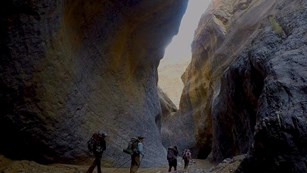
There are few established trails in the park, but hikers can follow canyon bottoms, open desert washes, alluvial fans and abandoned dirt roads to get around.
Backpackers are requested to obtain a free back country permit at either the Furnace Creek Visitor Center or the Stovepipe Wells Ranger Station.
Leave No Trace guidelines should be followed to minimize impacts on the fragile desert environment.
Overnight group size is limited to 12 people and no more than 4 vehicles. Larger groups will need to split up and camp at least 1/2 mile apart.
Campfires are not allowed in the backcountry. Use a campstove instead.
Pets are not allowed on trails or in the wilderness. However, pets are allowed on the Furnace Creek bike path and hundreds of miles of backcountry dirt roads.
Visit Death Valley - Camping
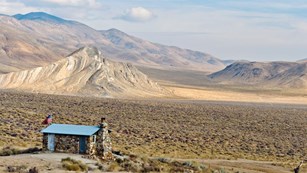
Death Valley has a variety of campgrounds from primitive to full hook-up.
Reservations for the Furnace Creek Campground are available for the camping season of October 15 to April 15 by calling 1-877-444-6777 or visiting recreation.gov.
Reservations must be made at least 4 days in advance, but can be made up to 6 months in advance.
All unreserved walk-in sites are open first come/first served for a period of 1 night up to 4 nights depending on the next incoming reservation.
These opportunities are available in person at the kiosk only. All other National Park campgrounds are first come/first served year round.
It is very rare for all campgrounds to fill in Death Valley. Prime locations may be taken during busy times, but there is typically space at Sunset Campground (no tables, hookups, or firepits) even during the busiest of times.
The high season is from November through March as well as all holidays from October through May.
Visit Death Valley - Biking and Mountain Biking
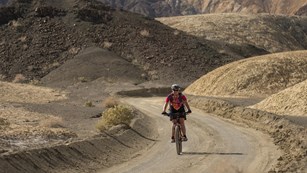
Bicycles can be used on all park roads that are open to public vehicular traffic.
They can also be used on routes that have been designated for bicycle use in developed areas such as the path between the visitor center and the Harmony Borax Works.
They are not allowed on closed roads, service roads, off roadways, in the wilderness, or on any trails. Riding a bicycle abreast of another bicycle on the park's narrow roads is dangerous and is also prohibited.
Death Valley has more than 785 miles of roads including hundreds of miles suitable for Mountain Biking.
Visit Death Valley - Birdwatching
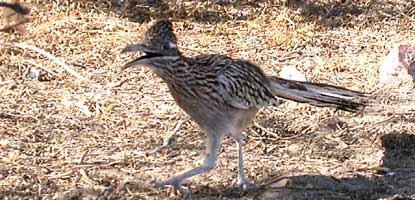
Death Valley is one of the most impressive ornithological biomes in the National Park System.
As visitors travel from the low valley desert, up the canyons, through the pinyon-juniper woodlands and onto the high boreal peaks, climate and vegetation changes are obvious.
This wide diversity of habitat leads to a subsequent diversity in bird species.
Death Valley and other valleys in the park are long north-south troughs just east of the Sierra Nevada range. Migratory birds are channeled into these valleys and stop at its desert oases and mountains.
Death Valley National Park Fees and Passes
Vehicle Entrance Fee
$30 for 7 Days
This permit allows all persons traveling with the permit holder in one single private, non-commercial vehicle (car/truck/van) to leave and re-enter the park as many times as they wish during the 7-day period from the date of purchase.
Motorcycle Entrance Fee
$25 for 7 Days
Individual Entrance Fee
$15 for 7 Days
This permit allows a single individual traveling on foot or bicycle to leave and re-enter the park as many times as they wish during the 7-day period from the date of purchase.
Death Valley Annual Pass
$55 for one year
Annual pass providing free entrance to Death Valley for 12 months from the date of purchase.
Note: Fees are subject to change.
Death Valley National Park - Moving Stones
Visit Death Valley - Tours
More Day Trips and Tours
|
Las Vegas Tours |


